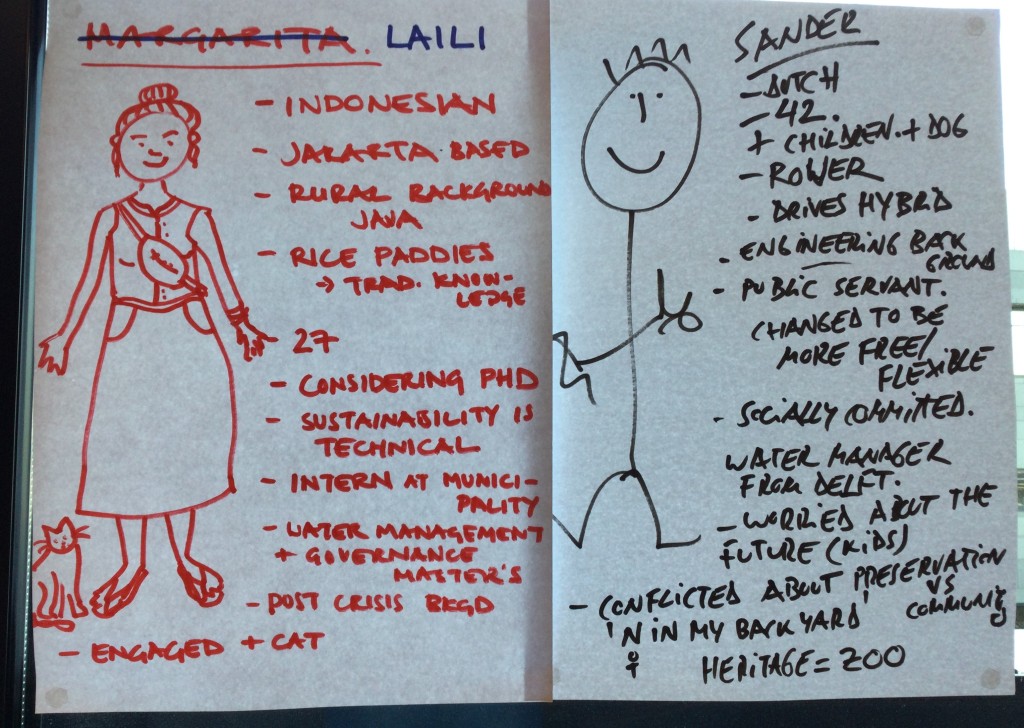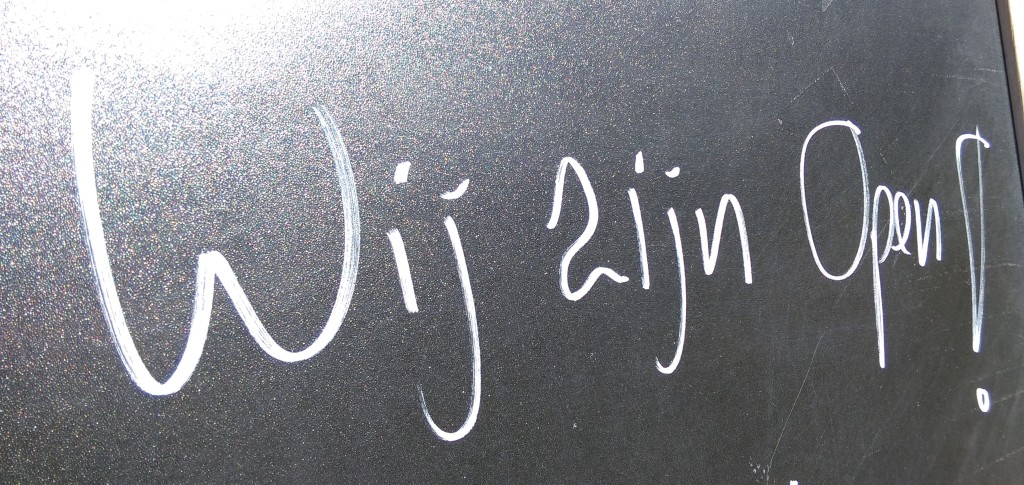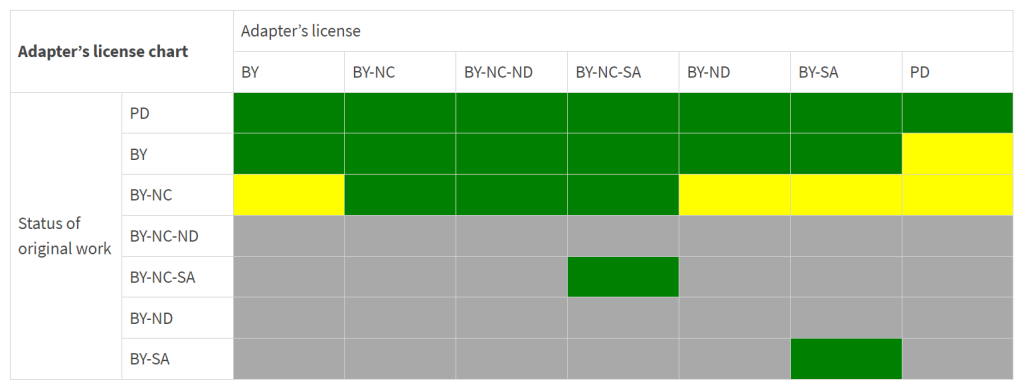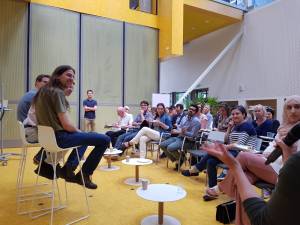It was at the Extension School quarterly meeting in February that the idea first occurred to us: over drinks a colleague spoke downheartedly of the difficulty to convince teachers to commit to working on an online course on top of all their other chores. Could we then lock them in a castle and not let them out until they delivered a course? What was said in jest all of a sudden became a serious proposal to be considered by the ES management team. Ok, we weren’t gonna take anyone away against their wishes and castles are in short supply these days, but it could still work: if a course team (usually a group of academics) could free up five consecutive days in their busy diaries and come together under the same roof with the sole purpose of producing a course, I hypothesized that production time would be substantially reduced. And even gambled the thought that with no other work/family distractions, well fed and wined, comfortable beds provided, endless WI-FI, and the space and opportunity to focus on a common task, the happiness would be such that they’d not only enjoy the experience immensely but also would want to do it again.
At the beginning of June, I got the go-ahead to make ‘boot camp’ happen. By then, I had already informally approached a course team: the Prof responsible for the two MOOCs in the Water and Ports, Historic Cities and Landscapes program had earlier in the year received approval for a new course. I knew we worked well together and more importantly, we liked each other. This allowed me to tick off two ‘must haves’ from my wish list: experience and camaraderie.
Next we had to find the time when everyone could be available. I had hoped for a summer start but in the end, we settled on w/c September 5, the beginning of the academic year at TU Delft. With a whole week blocked in our calendars, the search for a suitable venue could commence. We needed somewhere ‘lovely’, easy to reach by public transport, all-in-one in terms of accommodation, work space and meals, in a location that afforded an easy escape to clear the heads (i.e. a castle in an enchanted forest, or at least surrounded by gardens). At such short notice, however, we didn’t quite manage all of this. When I headed off on my short break in July, I had a course team, a course proposal, an action plan and a … hotel in Dordrecht. I had to trade: inspiring outside space for a top-floor swimming pool and sauna.
While the original boot camp schedule was to gather on Sunday evening to give everyone a chance to settle in and hold a first work session, to save on costs, we delayed the start until Monday and instead met online prior to arriving in Dordrecht. Eight of us in total –one learning developer (at your service), one evaluator (second pair of hands for the LD), five content experts (a combination of both established and budding academics), and a fully trained teaching assistant. The purpose of this meeting? For everyone to say hello to each other, and for me to make sure that we all stood on the same starting point, knew where the finish line was, and the route to get there. Less metaphorically: set the goals, discuss expectations and run through practicalities for the week away. I even gave them homework (which they were likely not to do): familiarise yourselves with the approved course proposal –rationale, learning objectives and outcomes, structure, target audience.
And so it was that on Monday, September 5th, 2022 at 8:55 am, hugged (‘coz WHO says the pandemic is over) and fueled with coffee, we were ready to go. Aim of the day: blueprint, and a first draft of the about page to be sent to marketing for comments. Totally doable since we had a solid course proposal, right? Wrong.
Course proposals are never solid, especially not when months go by between submission, approval and the beginning of production. Nothing is set on stone until the about page is published and registration opens. In our case, the essence of the course was there, only we started from zero to define who our personas were, hone in on what they needed and what we could give them, what they would be able to do after taking the course that they couldn’t do before. And so forth.

I won’t go into details of what happened each of the four and a half days we stayed in Dordrecht. Suffice it to say that we put in long hours, sketched out the narrative (and assessment) for each of the course modules, then revised and strengthened it, reviewed and strengthened it again; we conversed, dialogued, laughed, got frustrated, tensed the line and let go; we were a woman down on Wednesday; did a live pitch of the course to three potential professional learners on two occasions; and had 24/7 supply of coffee/tea/other liquids and solids of a healthy type.
In a nutshell, were you interested in holding a similar event, here is what you need to stand you in good stead: (I might come back later to add to this list)
- A course team, with empty diaries, ready and happy to focus on the task, trained if not experienced in online course production, familiar with the story the course will tell and the part they will write, and who get on well with each other. At least one person (TA or other) should have the ability to make sense of chaotic conversations and record them on paper in a suitably legible manner, for posterity.
- A sound course proposal, as established by the Extension School –the more stable, solid and predefined the course narrative, the faster it will be to move forward.
- A venue, ideally containing the best possible conditions for working, living (eat, drink, sleep, fresh air) and surviving ‘being-100%-stuck-with-your-colleagues’, i.e. opportunities to get away from them.
- A master of ceremonies (aka learning developer) to guide the conversations, push forward and pull back when needed, read the room, keep the focus, manage time on and off task, recap at the end of the day and set goals for the following.
- A clear idea of what you want to achieve, how far you can reach, but also a readiness to accept that the posts will shift and to allow yourselves the freedom and flexibility to change the plan.
Each course is a different adventure. A different story to tell. The course team gave us their time; we provided the right space for them to be able to focus on one task. The conversations that took place in four and a half days in Dordrecht would have happened over six months had we followed a ‘normal’ process of production. But what really, really counts here is that these four and a half days together created a good-looking, engaging, practical story that we all can tell from now. Not in six months’ time.
From here my thanks to Clint Lalonde for sharing with me his experience of book sprints in Canada; the Extension School management team for supporting a bit of madness (aka ‘innovation’); the VW course team (Carola, Hilde, Rachel, Matteo, Charlotte and Zuza) for being such amazing human beings and a pleasure to work with; Tracey, the best second-in-command; Dénise, who speaks Dutch much, much better than me; and finally, to the staff at the van der Valk Hotel in Dordrecht –if only they had speeded up dinner, we could have enjoyed the pool.
Don’t ask me what Dordrecht is like, I’m afraid I don’t know.
Coming soon to a screen near you: ‘Water Values: Leveraging the Past for Sustainable Water Systems’.





